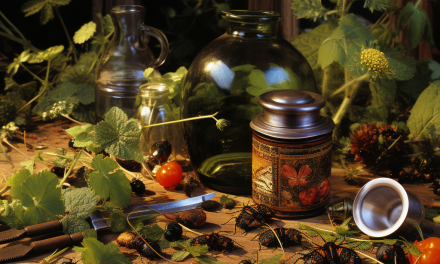Welcome to Your Garden Sanctuary 🌱
Hello, fellow green thumbs! It’s Gayle here, your friendly neighborhood gardener. Ah, there’s nothing quite like the satisfaction of watching your garden flourish, is there? You’ve watered diligently, pruned lovingly, and even spoken sweet nothings to your prized roses. But wait—what’s that you spot on your rose leaves? Tiny invaders disrupting your hard-earned utopia!
Let’s get down to the root of the problem. In my years of gardening, one thing has remained constant: the need for effective Garden Pest Control. Now, don’t get me wrong. Nature is all about balance. Insects have their role in the ecosystem. However, when they start munching away your petunias or laying siege to your lettuce, it’s time to take action!
Pro-Tip 💡: Quick action is crucial. The longer you wait to deal with pests, the more challenging they become to manage.
So, without further ado, let’s embark on this journey to reclaim our garden sanctuaries from these unwelcome guests. Buckle up; you’re in for a learning adventure!
Know Your Enemy – Common Garden Pests 🐛🐜
Ah, the leaf chewers, the plant suckers, and the bud nibblers! Our gardens are a paradise not just for us but for a host of critters who’d like to take a bite out of our hard work—literally. Recognizing these little rascals is the first step to reclaiming your garden’s former glory.
Aphids
Ah, aphids—the tiny garden vampires! These minuscule insects love sucking the life out of your plants, particularly the new growths. Usually green or black, they hang out in clusters under leaves or on stems. To make matters worse, they secrete a sticky substance called honeydew that attracts ants and molds.
Pro-Tip 💡: Yellow sticky traps are excellent for early detection of an aphid infestation.
Garden Slugs 🐌
Slime trails, anyone? Garden slugs love the nightlife and leave behind their gooey path as a calling card. If you notice holes in your leafy greens or young plants, it might be the work of these slimy critters.
Pro-Tip 💡: Beer traps! Slugs are attracted to the scent of beer. A small container filled with it can act as an effective trap.
Caterpillars 🐛
Colorful but damaging, caterpillars feast on the leaves and fruits, leaving behind a skeletonized version of your once lush plant. Different types favor different plants, so you may have to deal with them on a case-by-case basis.
Pro-Tip 💡: Bird feeders can attract natural predators that will help control the caterpillar population.
Beetles 🪲
Whether it’s the Japanese beetle or the Colorado potato beetle, these hard-shelled insects can be a nightmare. They chew through leaves, flowers, and even fruits, leaving destruction in their wake.
Pro-Tip 💡: Neem oil is a natural and effective way to deter beetles. Just be sure to apply it in the evening to avoid harming beneficial insects.
Strategies for Effective Garden Pest Control 🌿🛡️
Alas, knowing your enemy is but half the battle. The other half? Implementing strategies that not only eliminate these uninvited guests but also prevent future invasions. And that’s what we’re going to explore in this section.
Organic Pesticides
Why resort to chemicals when nature has its own arsenal? Organic pesticides like garlic spray, chili pepper spray, or a simple soap solution can effectively deal with a variety of pests while being kind to the environment.
Pro-Tip 💡: Always test a small area before fully applying any homemade pesticide to ensure it won’t harm your plants.
Physical Barriers
Sometimes, the best defense is a strong barrier. Consider using row covers, bird netting, or even copper tape for slugs. These barriers act as the first line of defense, preventing pests from reaching your plants in the first place.
Pro-Tip 💡: Secure the edges of any covers or nets to prevent clever pests from sneaking underneath.
Beneficial Insects 🐞
Enter the superheroes of the insect world! Ladybugs, lacewings, and predatory beetles can keep harmful pests in check. You can either attract them naturally to your garden or buy them from a reputable source.
Pro-Tip 💡: Plant flowers like marigolds to naturally attract beneficial insects.
Regular Monitoring 🕵️♀️
Vigilance is key. Regularly inspect your garden for signs of infestation. Early detection makes Garden Pest Control much easier and less damaging in the long run.
Pro-Tip 💡: Use a magnifying glass for a closer inspection of leaves and stems, especially the undersides where pests like to hide.
Maintaining a Pest-Free Garden: Ongoing Care and Monitoring 📆🌼
So, you’ve identified the pests, taken action, and even put preventive measures in place. Excellent! But as any seasoned gardener will tell you, maintaining a pest-free garden is an ongoing effort. Let’s delve into sustainable practices for a thriving, pest-free garden.
Seasonal Checklists 🗓️
Every season brings its own set of challenges. Create a seasonal checklist that outlines pest control tasks tailored for the specific time of year.
Pro-Tip 💡: Use a gardening app or journal to set reminders for seasonal garden pest control tasks.
Regular Observation 👀
In the world of Garden Pest Control, information is power. The more frequently you inspect your garden, the quicker you can nip any potential problems in the bud.
Pro-Tip 💡: Make it a habit to stroll through your garden with a cup of tea or coffee. Enjoy the beauty and keep an eye out for any signs of trouble.
Updating Your Toolkit 🛠️
Advancements in organic pesticides and barrier methods are always happening. Stay up-to-date with the latest products and methods to ensure you’re using the most effective and least harmful solutions.
Pro-Tip 💡: Subscribe to reputable gardening magazines or newsletters for the latest in pest control innovations.
Celebrate Your Success 🎉
Yes, you heard that right! Taking a moment to enjoy and celebrate your well-maintained, pest-free garden is essential. After all, the garden is not just about the plants but also about the joy it brings to your life.
Pro-Tip 💡: Take before and after photos of your pest control efforts. You’ll be amazed at how far you’ve come!
And there you have it! With a focus on ongoing care and monitoring, you can ensure your Garden Pest Control efforts aren’t just a one-time event but a lifelong commitment to a beautiful garden.
The Final Word: Master Your Garden, Master Your Life 🌱👑
Let’s face it, life’s too short to spend it battling critters for control of your beloved garden. But as we’ve discovered, with the right knowledge and tools, you can effectively reclaim your piece of paradise. From recognizing the usual suspects to implementing targeted countermeasures and focusing on prevention, we’ve covered a lot of ground today.
Pro-Tip 💡: Bookmark this guide for easy reference in the future. Trust me, it’s a resource you’ll come back to time and again.
So go ahead, implement these tips and watch as your garden transforms from a battlefield to a sanctuary. Happy gardening!
Amazon and the Amazon logo are trademarks of Amazon.com, Inc, or its affiliates.AMAZON AFFILIATE DISCLOSURE The Garden Whisperer Tips blog is a participant in the Amazon Services LLC Associates Program, an affiliate advertising program designed to provide a means for sites to earn advertising fees by advertising and linking to Amazon.com. As an Amazon Associate, we earn from qualifying purchases. Some of the links on this blog are affiliate links, and if you go through them to make a purchase, we will earn a commission at no extra cost to you. AFFILIATE MARKETING AND ADVERTISEMENT TRANSPARENCY At Garden Whisperer Tips, we believe in full transparency with our readers. We participate in multiple affiliate marketing programs, and some of the links on this blog may be affiliate links. This means we may earn a commission if you click on the link or make a purchase using the link. We also host advertisements on our blog, which helps us generate revenue. Rest assured, our editorial content is not influenced by advertisers or affiliate partnerships.





